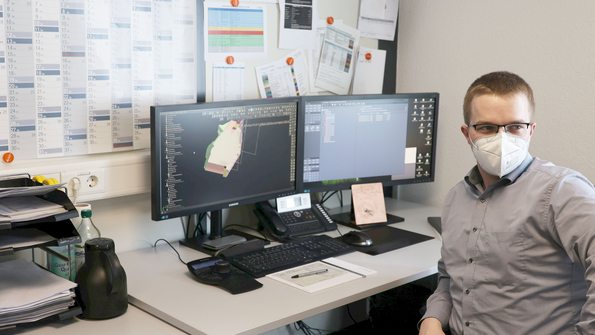Riemann Werkzeugbau is pushing the limits of machines and programs with Tebis
Increasingly complex and extensive workpieces result in greater demands – not only on the machinery but also on the CAD/CAM system. Because calculation times were getting longer, and their previously implemented program package couldn’t handle multiple operations, the programmers at Riemann Werkzeugbau in Georgsmarienhütte, Germany, decided to make a change and implement Tebis four years ago. The start of a success story.
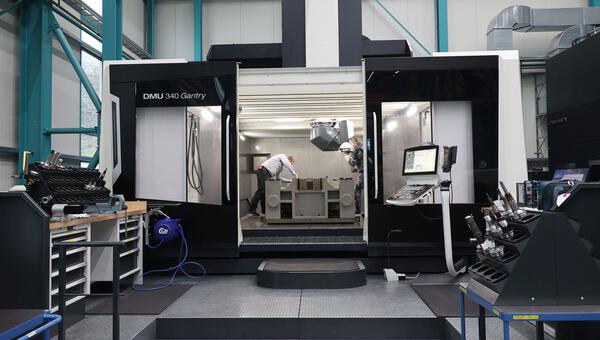
Michael Riemann, Diretor Geral da Riemann Werkzeugbau, Alemanha
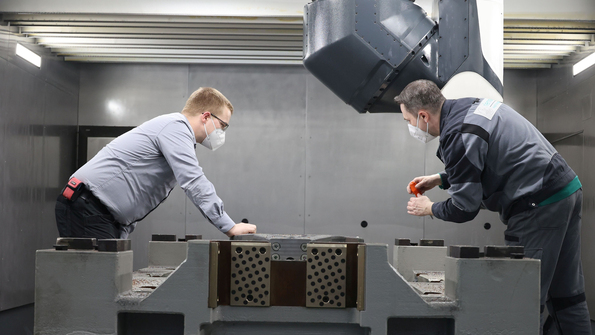
"There’s a very clear trend toward 5-axis machining," says Michael Riemann, who heads the company along with his brother Peter and his father Klaus Riemann. "Just a few years ago, 80 percent of our manufacturing was on 3-axis machines. Now we can't manage without 5-axis machines because of the increasingly demanding geometries.”
The growing complexity of the workpieces being machined, and the ever-increasing milling volume required in recent years made us painfully aware of the limitations of the CAD/CAM system that was previously in wide use.
The ratio of programming time to spindle run time was no longer cost-effective. More complex calculations often ran all night. In addition, the system we were using didn’t support templates, like those used for recurring programming tasks. "We had to take action," Riemann says, describing the situation at the time. "The easiest for us would have been to update the existing system. But we’re not always satisfied with taking the easiest route, especially when better alternatives are available. In this case, that was Tebis.”
On one hand, Tebis was already being used by most of Riemann's customers. On the other, the managing directors and the programming team had always regarded Tebis as a high-end solution. Other companies queried by the Riemann team also shared this opinion.
It ultimately came down to a showdown between the two CAD/CAM systems. Both software providers were tasked with programming identical workpieces. The first part would be programmed over several weeks with no time pressure and optimized to the maximum extent possible. A second workpiece was programmed and implemented on-site. The die manufacturers created a sample workpiece specifically for this purpose: a hot forming jaw that accurately represented all the features of typical parts.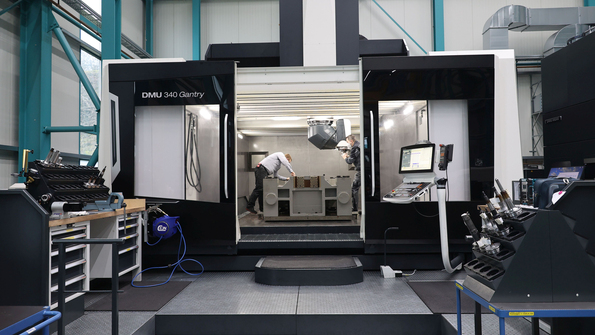
After the initial implementation phase – two programming licenses and six viewers – another programming station was added. The latest Tebis version 4.1 and several add-on packages are now in use. The company has also increased its workforce as a result: For example, two new Tebis programmers were hired. Another increase in the department is currently in the planning stage.
The entrepreneur is happy to have Tebis as a reliable and resilient backbone for high-precision tools. "With our complicated workpieces, we certainly push the machines and the programming to their limits," says Michael Riemann. "This makes it even more important for us and our designers to have experienced partners – the experts on the Tebis Hotline – who work proactively with us to find solutions when we hit limits.”
Given the increasing complexity, the comprehensive simulation possibilities with Tebis are a big plus for the die manufacturer. Relying on the “virtual machines” in the machining centers preinstalled by the manufacturer is out of the question for this family business. Working with progressive parameters and running at rapid traverse rates with millimeter precision requires absolute safety and reliability in the software for 100 percent conversion of the machine model dimensions into reality.
The die manufacturers therefore had a complete 3D scan made of their machines. All clamping devices and other relevant components were also digitalized. This was essential for Riemann because it was the only way to ensure that the real workpiece is accurately reproduced in the virtual world, down to the last screw.
The die manufacturers also work with actual data for the precision tools they use. And this ultimately applies to the blank as well. The fitters can therefore be certain that the machining results will precisely match what they simulated beforehand. "Our programmers are ultimately 'milling' with the 'real' cutter on the 'real' surface of the 'real' part," Riemann explains. Working with real data establishes a high level of process safety – and that's also a big plus when it comes to on-time delivery to the customer.”
Production at Riemann isn’t completely paperless yet. But the paper drawings no longer include any dimensional information, for example. Only the data stored in Tebis are valid and up to date. Tebis viewers are now used on all machines.
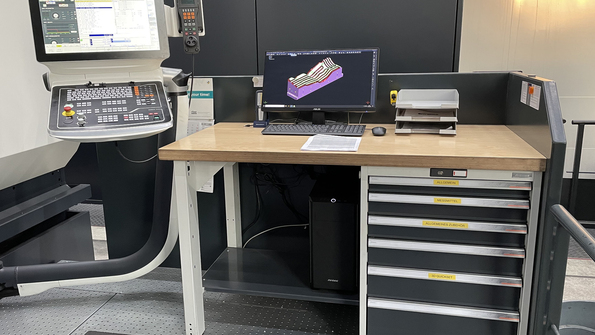
Riemann appreciates the highly trained employees, some of whom perform 2.5D programming directly on the machines. "It can certainly happen that the programs are loaded into the system and the operator then derives the DXF curves, for example. What's really great is that Tebis provides all of this in a single end-to-end system."
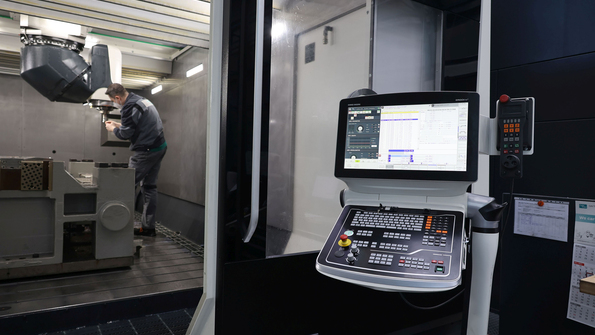
However, the programs are usually already completed. Tolerances and other parameters are usually determined by the OEM’s color codes. "Because most of them also use Tebis in their work preparation, no data conversion is necessary. The company sees this as a key advantage. "For example, if a customer adds a note: 'Caution! Not 10H7, but 8H7,' we now know for sure that everyone affected by this will see it," Riemann affirms. This isn’t always true for converted data. End-to-end processing with Tebis therefore gives customers a bonus in terms of stability in their overall processes. This was one of the reasons that the OEMs advised Riemann to use this CAD/CAM system.
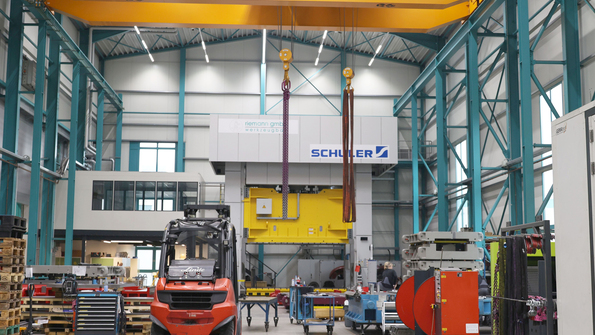
Tebis has opened the door to many new possibilities for the die manufacturers. Compared with the old CAD/CAM system, spindle run time has increased dramatically relative to programming time. Using Tebis, the programmers generate many more parts per person than ever before. Programming time has been roughly halved for comparable parts. Given the time pressure in die manufacturing, this is an advantage that can’t be underestimated – because the lead time for dies has become increasingly relevant, especially in the automotive industry.
Thanks to Tebis, the Riemann team not only manufactures significantly more complex parts – it’s also able to take on significantly more orders. The capabilities of the program package allow us to take on other jobs where die manufacturers can’t be replaced so easily. "We’ve acquired a lot of expertise in working with the capabilities of the CAD/CAM system," Riemann says. "We put that to work for our clients and try to push the limits of the system."
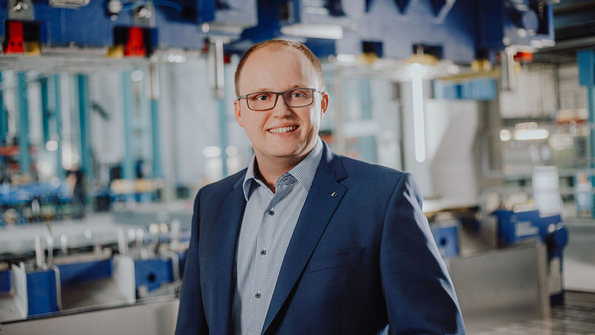
Michael Riemann, Managing Director at Riemann Werkzeugbau in Georgsmarienhütte, Germany: "Using Tebis, we create many more parts per programmer than before. Programming time has been reduced by up to half of that needed for comparable parts. We’re also manufacturing much more complex parts than in the past.”
Riemann Werkzeugbau
For over 30 years, this die manufacturing company in Georgsmarienhütte, Germany, has been providing professional solutions for the manufacture of series and prototype dies and fixtures for the sheet-metal processing industry. Customers from many different industries benefit from innovative and intelligent product solutions for manufacturing progressive dies, transfer dies and blanking dies. The company's customers include nearly all European automobile manufacturers, either directly or through the products they manufacture. A well-equipped technical center, including a full Schuler production press, allows Riemann to provide its customers with mature dies that are ready for production.
Tebis V 4.1
The complete Tebis 4.1 parametric-associative CAD/CAM system is an end-to-end platform for all tasks from manufacturing preparation to design and CAM programming. This enables die, model and mold manufacturers in particular to work seamlessly in a single system with a high degree of automation. The software developers designed and optimized the intuitive user interface of Tebis 4.1 in close collaboration with users. The system structure is therefore consistently oriented to the logical procedures of CAD designers and CAM programmers and enables clearly structured workflows.
A convincing CAD/CAM solution involves more than "just" good software
The benchmark test to which Riemann invited the two software providers was clearly more than a simple comparison of the two systems. The process clearly revealed the value that software manufacturers place on Riemann as a user. Tebis had made exceptional preparations and brought a programming expert in addition to the optimized first part. That was one of the reasons the decision was made in favor of Tebis. And it’s proven itself in everyday work: Now not only are the die manufacturers working with what they consider to be the optimal CAD/CAM system. They also receive extensive support and expert knowledge, because the technicians on the Tebis Hotline are dedicated and competent partners for the designers, especially when it comes to production engineering challenges.


